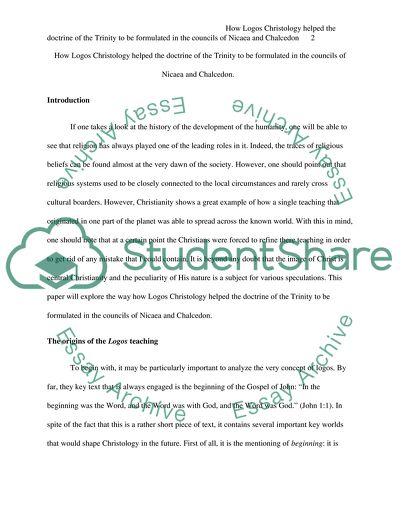Cite this document
(“How Logos Christology helped the doctrine of the Trinity to be Essay”, n.d.)
How Logos Christology helped the doctrine of the Trinity to be Essay. Retrieved from https://studentshare.org/religion-and-theology/1694024-how-logos-christology-helped-the-doctrine-of-the-trinity-to-be-formulated-in-the-councils-of-nicaea-and-chalcedon
How Logos Christology helped the doctrine of the Trinity to be Essay. Retrieved from https://studentshare.org/religion-and-theology/1694024-how-logos-christology-helped-the-doctrine-of-the-trinity-to-be-formulated-in-the-councils-of-nicaea-and-chalcedon
(How Logos Christology Helped the Doctrine of the Trinity to Be Essay)
How Logos Christology Helped the Doctrine of the Trinity to Be Essay. https://studentshare.org/religion-and-theology/1694024-how-logos-christology-helped-the-doctrine-of-the-trinity-to-be-formulated-in-the-councils-of-nicaea-and-chalcedon.
How Logos Christology Helped the Doctrine of the Trinity to Be Essay. https://studentshare.org/religion-and-theology/1694024-how-logos-christology-helped-the-doctrine-of-the-trinity-to-be-formulated-in-the-councils-of-nicaea-and-chalcedon.
“How Logos Christology Helped the Doctrine of the Trinity to Be Essay”, n.d. https://studentshare.org/religion-and-theology/1694024-how-logos-christology-helped-the-doctrine-of-the-trinity-to-be-formulated-in-the-councils-of-nicaea-and-chalcedon.


